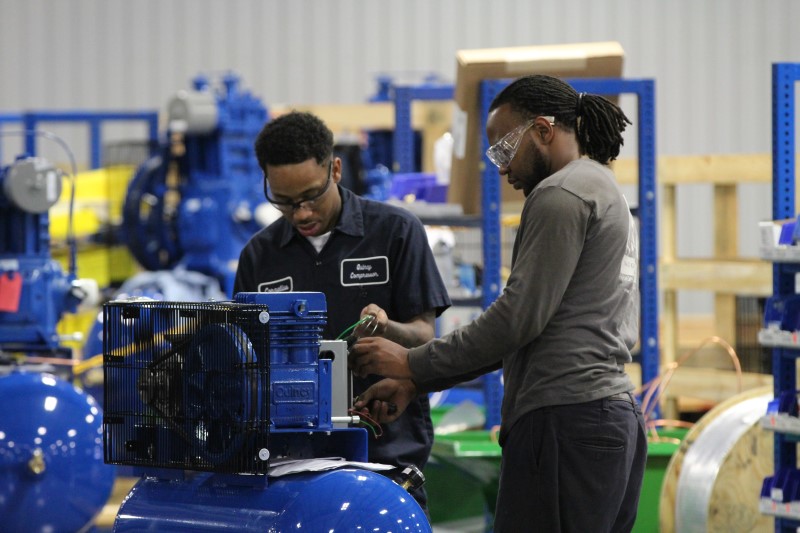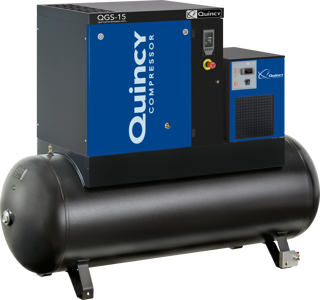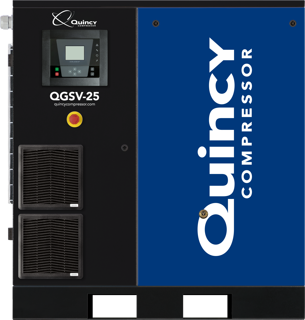How to Size an Air Compressor for Your Shop – A Beginner’s Guide
Choosing the right air compressor can make or break your shop’s productivity. Whether you run a small machine shop, auto repair garage, woodworking business, or manufacturing facility, properly sizing your air compressor ensures efficient performance, minimal downtime, and long-term savings.
In this beginner’s guide, we’ll walk you through the key steps to size an air compressor for your specific needs—without overpaying or under-powering your operation.

Why Proper Sizing Matters
An oversized compressor wastes energy and money. An undersized compressor causes pressure drops, interrupts workflow, and wears out faster. When you size your air compressor correctly, you benefit from:
- Consistent airflow
- Lower maintenance costs
- Improved tool performance
- Longer equipment life
Step 1: Calculate Your Air Demand (CFM)
The most important factor is CFM (Cubic Feet per Minute)—this measures the volume of air your tools require.
Tip: Check Your Equipment Specs
Look at the manufacturer specs of your air tools or machines and find their CFM requirements. If you operate multiple tools at once, add their CFM together.
Example:
- 1/2” Impact Wrench = 6 CFM
- Spray Gun = 9 CFM
- Die Grinder = 5 CFM
Total = 20 CFM
Rule of Thumb: Add 25–30% to your total CFM to allow for future expansion and avoid running at full capacity 24/7.
Step 2: Determine the Required Pressure (PSI)
PSI (Pounds per Square Inch) measures the pressure level your equipment needs.
Most shops operate between 90–150 PSI, but high-pressure applications like sandblasting may require 175 PSI.
Choose a compressor that consistently delivers the required PSI without dips. Undershooting PSI can reduce tool effectiveness or cause stalling.

Step 3: Choose a Tank Size That Matches Your Work Style
While tank size doesn’t affect CFM, it influences how long your compressor can run without cycling.
- Smaller Tanks (20–60 gal): Better for short bursts, portable use
- Larger Tanks (80–120+ gal): Ideal for continuous-use environments like small manufacturing or body shops
All Quincy shop compressors listed here are tank-mounted for convenience and optimal space usage (Pricing Included).
Step 4: Consider Fixed-Speed vs. Variable-Speed (VSD)
Variable-speed compressors automatically adjust motor speed to match air demand, delivering:
- Lower energy costs
- Less wear and tear
- Quieter operation
Fixed-speed compressors are perfect for consistent workloads with a tighter budget.
Need help choosing? Talk to a JHFOSTER expert to get a personalized recommendation.
Step 5: Think About Noise & Placement
Noise levels (measured in dBA) matter—especially in small spaces.
- Look for compressors in the 65–70 dBA range (like Quincy’s QGS and QGSV models) for a quieter work environment.
- Consider tank-mounted models with integrated dryers to save floor space and reduce installation complexity.


Step 6: Choose a Reliable Brand with Local Support
You want a compressor that’s:
- Pre-tested & ready to run
- Backed by experts
- In-stock and shipped fast
Many of our Quincy air compressors are warehoused locally in the Midwest and built to deliver dependable performance with fast delivery.
Don’t Oversize or Undersize—Right-Size Your Compressor
Sizing your air compressor isn’t about guessing—it’s about matching your tools, pressure, and usage patterns to a reliable system.
Ready to get started?
Check out our in-stock Quincy compressors with specs, pricing, and fast delivery options.
Request a fast quote now to talk to one of our air compressor experts.
